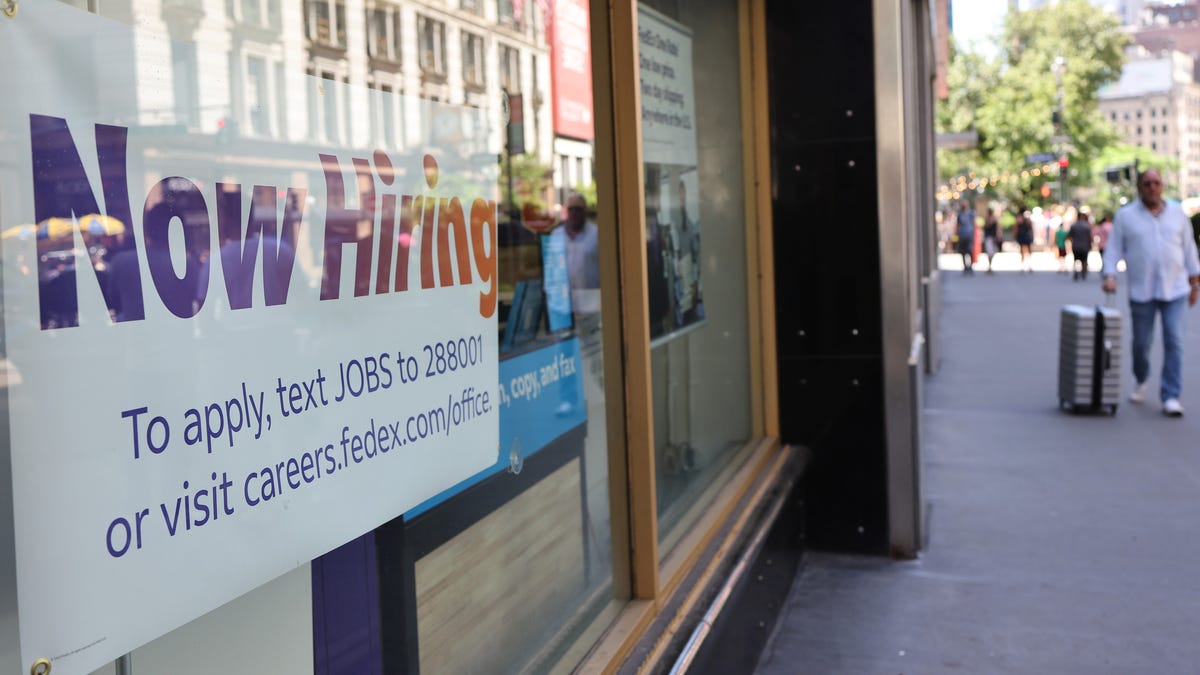The last jobs report before Election Day is coming. Brace for Boeing and hurricane hits

In This Story
The last monthly employment report before Election Day is expected to show that U.S. job creation slumped in October, as the economy faced hits from hurricanes and a massive work stoppage at Boeing (BA-3.20%).
Analysts estimate that data set for release on Friday morning by the Bureau of Labor Statistics (BLS) will show the U.S. added about 120,000 non-farm jobs last month, according to data compiled by FactSet (FDS+0.07%). That’s compared to 254,000 non-farm jobs created in September. The unemployment rate is expected to hold steady at 4.1%
Hurricanes Helene and Milton, which struck the southeast U.S. in late September and early October, are likely contribute to job losses and other temporary shocks to the economic data. The ongoing, more than month-long strike by 33,000 Boeing machinists is also throwing cold water on manufacturing payrolls — and will continue to do so as the strike drags on.
Job openings also fell to their lowest level since January 2021 in September, with 7.44 million jobs open at the end of the month — a decrease from a downwardly revised 7.86 million in August, the BLS Job Openings and Labor Turnover Survey, showed Tuesday.
Meanwhile, inflation measured by the Bureau of Economic Analysis’ Personal Consumption Expenditures (PCE) index slowed to an annual rate of 2.1% in September, the agency said Thursday, down from 2.3% the month before and in line with analysts’ expectations. That data on the Federal Reserve’s preferred inflation gauge shows inflation well on its way to the central bank’s annual target of 2%.
Despite the drop, core PCE — excluding food and energy — was still 2.7%. The U.S. economy grew less than expected at an annualized rate of 2.8% in the third quarter, the Bureau of Economic Analysis said Wednesday.
With the Federal Reserve’s next interest rate decision coming next week, Bankrate senior economic analyst Mark Hamrick said the central bank likely won’t hinge its next move too heavily on the recent information.
“The Federal Reserve is mindful that incoming data, including the monthly jobs report, risks being whipped around by temporary factors,” Hamrick said. “It is generally a good practice not to make too much of out of one month’s data.”
For now, he believes the most likely path for the FOMC will be to make a quarter-point cut at the Nov. 7 meeting and again at its Dec. 18 meeting. “The Fed is walking a tightrope between the goals of its dual mandate, maximum employment and stable prices,” he said.
Related
A top recruiter says sports marketing roles are hot right…
Jobs are opening up in the sports industry as teams expand and money flows into the industry.Excel Search &
Public employees and the private job market: Where will fired…
Fired federal workers are looking at what their futures hold. One question that's come up: Can they find similar salaries and benefits in the private sector?
Mortgage and refinance rates today, March 8, 2025: Rates fall…
After two days of increases, mortgage rates are back down again today. According to Zillow, the average 30-year fixed rate has decreased by four basis points t
U.S. economy adds jobs as federal layoffs and rising unemployment…
Julia Coronado: I think it's too early to say that the U.S. is heading to a recession. Certainly, we have seen the U.S. just continue t










